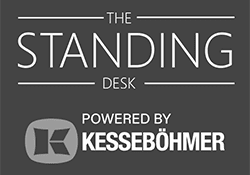Evolution of Standing Desks
Standing desks may seem like the hot new thing, but they’re really not new. Also known as a stand-up desk or a height-adjustable desk, this office mainstay has definitely gained popularity in recent years as a way to improve health and productivity in the workplace. But the concept of standing while working is not a new one. In fact, the history of standing desks dates back hundreds of years.
Early Standing Desks
One of the earliest known examples of a standing desk is the lectern, a slanted stand the ancient Greeks and Romans used to hold texts while speaking in public. Long before microphones, the lectern allowed speakers to stand upright and project their voice, making it easier for audiences to hear and understand them.
Standing desks also have a long history in the art world. Many famous artists, including Leonardo da Vinci and Vincent van Gogh, were known to use standing desks while working on their masterpieces. These desks allowed artists to stand upright and move around more freely, improving their posture and allowing them to work for longer periods of time without the feeling of fatigue that goes along with it.
In the late 19th and early 20th centuries, standing desks began to be used more frequently in the workplace. Factory workers and office clerks often stood at their desks for extended periods, leading to a need for ergonomic solutions to reduce the risk of musculoskeletal disorders. One solution was the introduction of the standing desk, which allowed workers to adjust their workspace to a more comfortable height and reduce the strain on their bodies.

As technology advanced, standing desks began to evolve. In the 1980s, electric standing desks were introduced, allowing users to easily adjust the height of their workspace with the push of a button. This one small change made standing desks more accessible to a whole range of users and paved the way for their widespread adoption in all kinds of workplaces.
Modern Standing Desks
Today, standing desks come in a variety of styles and designs, ranging from simple manual adjustable desks to sophisticated electric desks and cord-free pneumatic desks. Many companies have also started to offer standing desks as a way to improve the health and well-being of their employees, recognizing the benefits of standing while working.
Standing Desk Pros and Cons
The benefits of standing desks are numerous. Studies have shown that standing desks can contribute to a number of positive outcomes including:
- improved posture
- reduced risk of musculoskeletal disorder
- increased energy and productivity
Standing desks have also been linked to improved mental clarity and focus, as well as a reduction in back pain and other common office-related aches and pains.
Despite the numerous benefits of standing desks, they are not without their drawbacks. Some users may experience discomfort or fatigue while standing for long periods of time, and it is important to take breaks and move around to avoid these issues. Additionally, standing desks may not be suitable for everyone, and it’s a good idea to consult with a healthcare professional before making the switch to a standing desk.
Standing Desk – Revolution or Evolution?
They may seem like a revolutionary concept in a lot of workplaces, but in point of fact, standing desks have evolved over time to meet the needs of workers and promote better health and productivity in the workplace. While standing desks may not be suitable for everyone, they have numerous benefits and are an increasingly popular choice for those looking to improve their health and well-being in the workplace.
Make a standing desk part of your every day with height adjustable desk from The Standing Desk.



